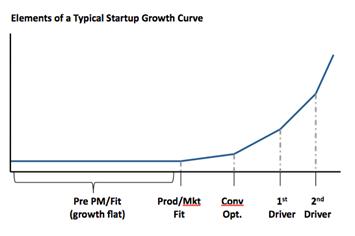In case you wanted to know, here are some of the basics

There is a tremendous amount of literature that exists about growth hacking your startup to success.
Significantly less literature exists about growing your startup from day zero. Some very smart people espouse the principles of startup marketing but these learnings are not commoditised simply because they are less sexy.
Would you read this?
“How startup <name> burnt <ridiculous amount of money> figuring out < seemingly obvious thing> & reaches product-market fit.”
Exactly. But this is a critical milestone on the road to success.

“Once we hit x users, we can go out & raise more money.” — Founders everywhere
Limited runway. Pressure to succeed from investors. Startups tend to launch on day one with a goal to hit x users in t. A lot of positives can be said about hustling, but when you’re pursuing a static goal that does not fit into a big picture plan, you’re in trouble.
Don’t get me wrong. Goals are good. But going deeper , every early stage startup exists to validate a hypothesis. The hypothesis is that a need/problem exists and enough users will be willing to part with their money to serve that need/solve that problem.
I’ll rephrase that more technically: The hypothesis is that a large enough market exists that has a need and that your product (or some future iteration of it) fits the market need. When you’ve successfully validated this, you’ve attained Product-Market Fit and you get to the exciting point of the curve.
From day one, you need to set out to validate this hypothesis. Your focus is Product-Market-Fit. Nothing else matters. No metrics, no CAC, no LTV and no conversion rates.
Also Read: Time to hustle! Check out these 10 sales and marketing jobs
It’s textbook customer development. Segment your market, figure out who your ideal users are, and find a way to talk to them. Is there a market need for your product? If no, you need to optimise — find another market to serve or tweak the product. Try again.
If yes, get a representative sample of your target market using your product. Then figure this out: Are you delivering real value to them? Do they love your product? Would they be disappointed without it? If no, you need to optimise : Deliver features that are of value to them and make your product a must-have. Try again.
This process, simple though it sounds, can take weeks, or months, or possibly even years. But think big-picture here: You’re building a product that your target market will love.
If yes, you move on to the next phase — channel discovery and conversion optimisation. Build your funnel.

At this stage, your goal is to start sending qualified leads into your funnel. Again, forget CAC, forget LTV. Here, your focus is conversion rates. But here’s something to remember and measure: Different channels have different conversion rates.

Measure performance from different channels and you’ll quickly see which channels are working better for you — which ones are sending qualified leads vs. those that are not. At this point, you should have a rough idea which channels are generating revenue and running at positive ROI.
Also Read: Beyond marketing: 4 reasons why the ‘expert content’ industry is ripe for disruption
Behold, you’ve found your first growth driver! Double-down on it. Then, optimise conversion rates by fixing the leaks in your funnel. Optimise your outbound collaterals (ads, headlines, images, CTAs) and your inner funnel (landing page, email drip, product engagement). This will drive your growth.
Once you’ve optimised the channel, its time to start pulling the levers to figure out the next growth driver. It could be no channel — it could be time to conquer a different market. The process remains the same. At this point, you’re well on your exponential growth curve and you’re well on your way to a building a sustainable and successful business.
—-
The views expressed here are of the author’s, and e27 may not necessarily subscribe to them. e27 invites members from Asia’s tech industry and startup community to share their honest opinions and expert knowledge with our readers. If you are interested in sharing your point of view, submit your post here.
Featured Image Copyright: convisum / 123RF Stock Photo
The post Startup essentials: Why startup marketing is not growth hacking appeared first on e27.